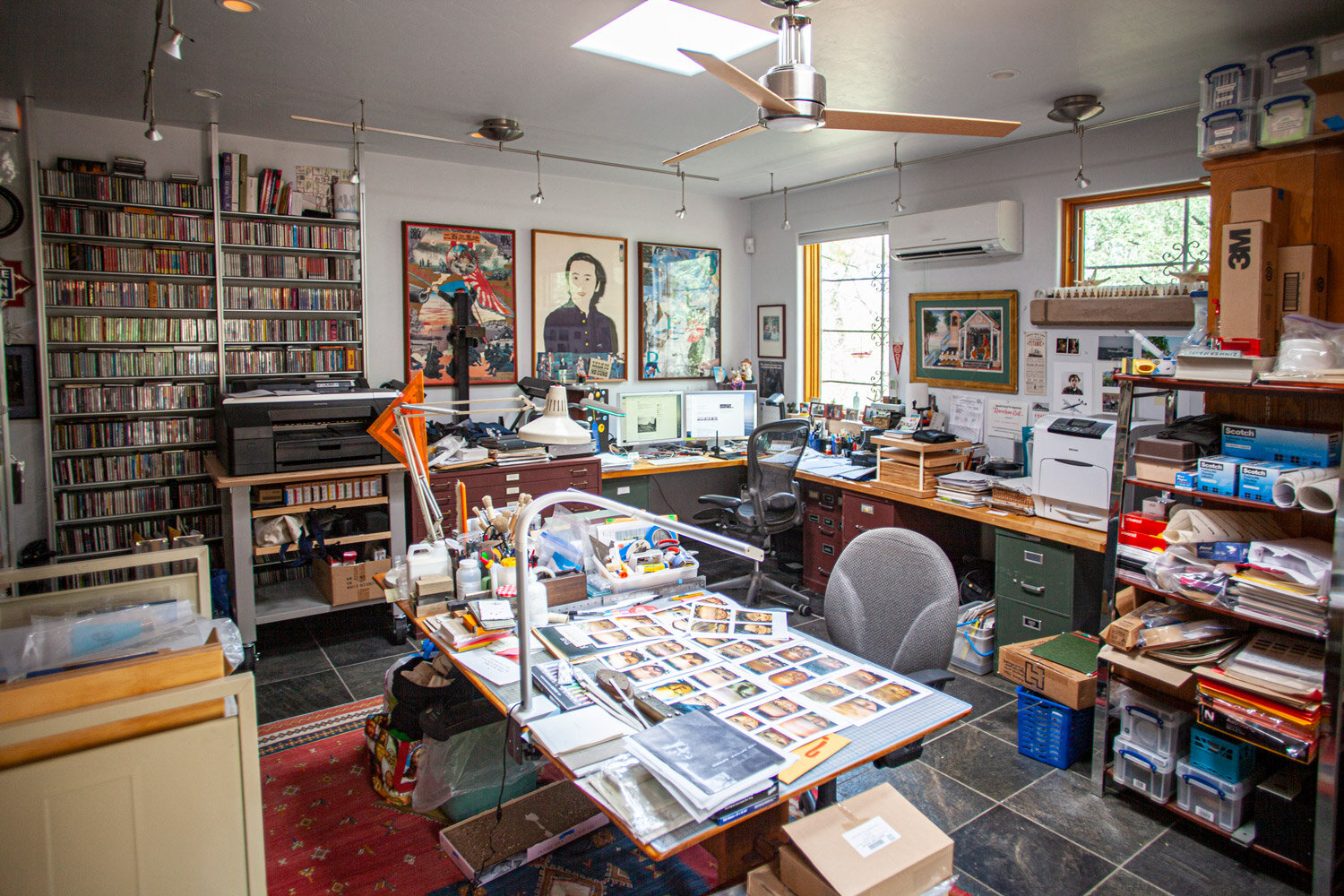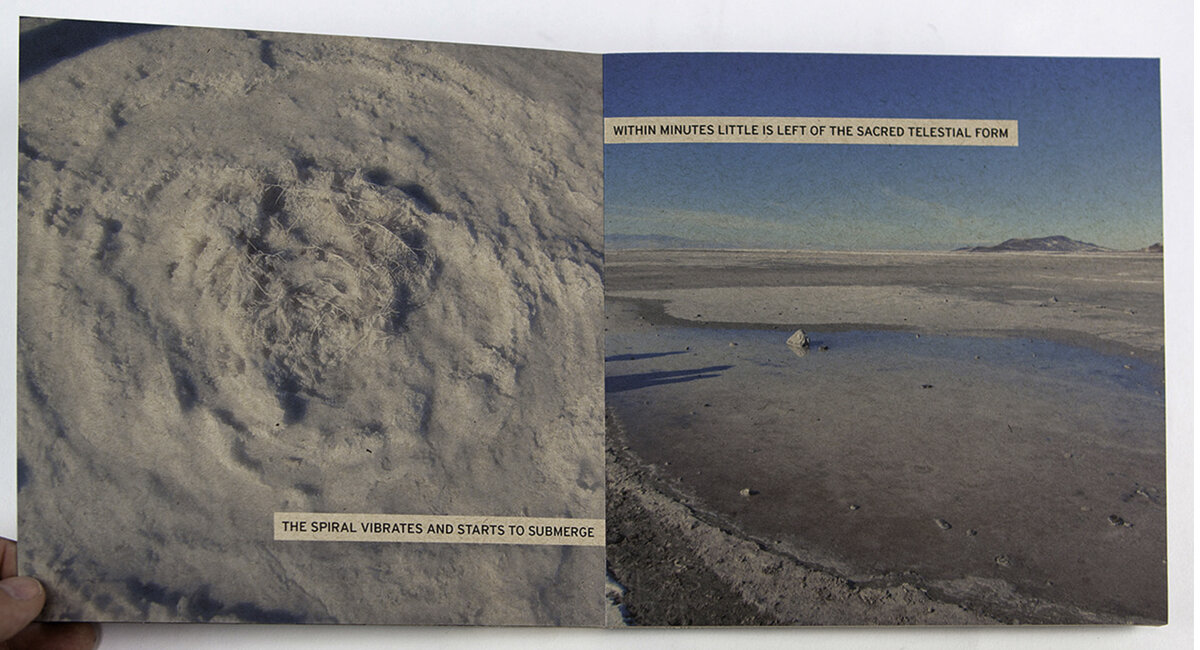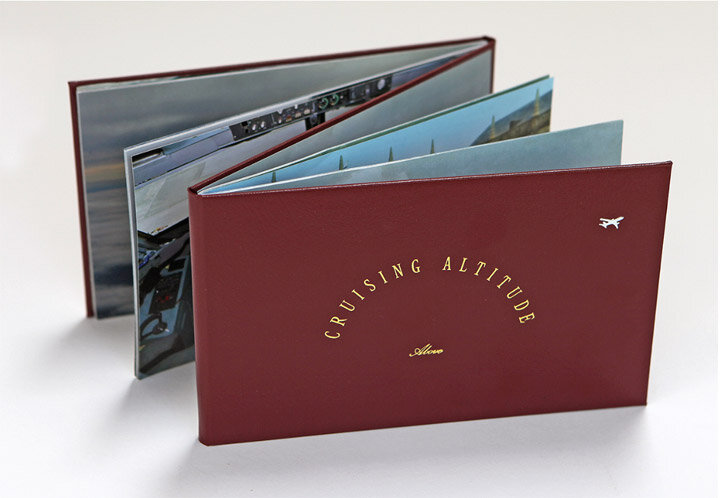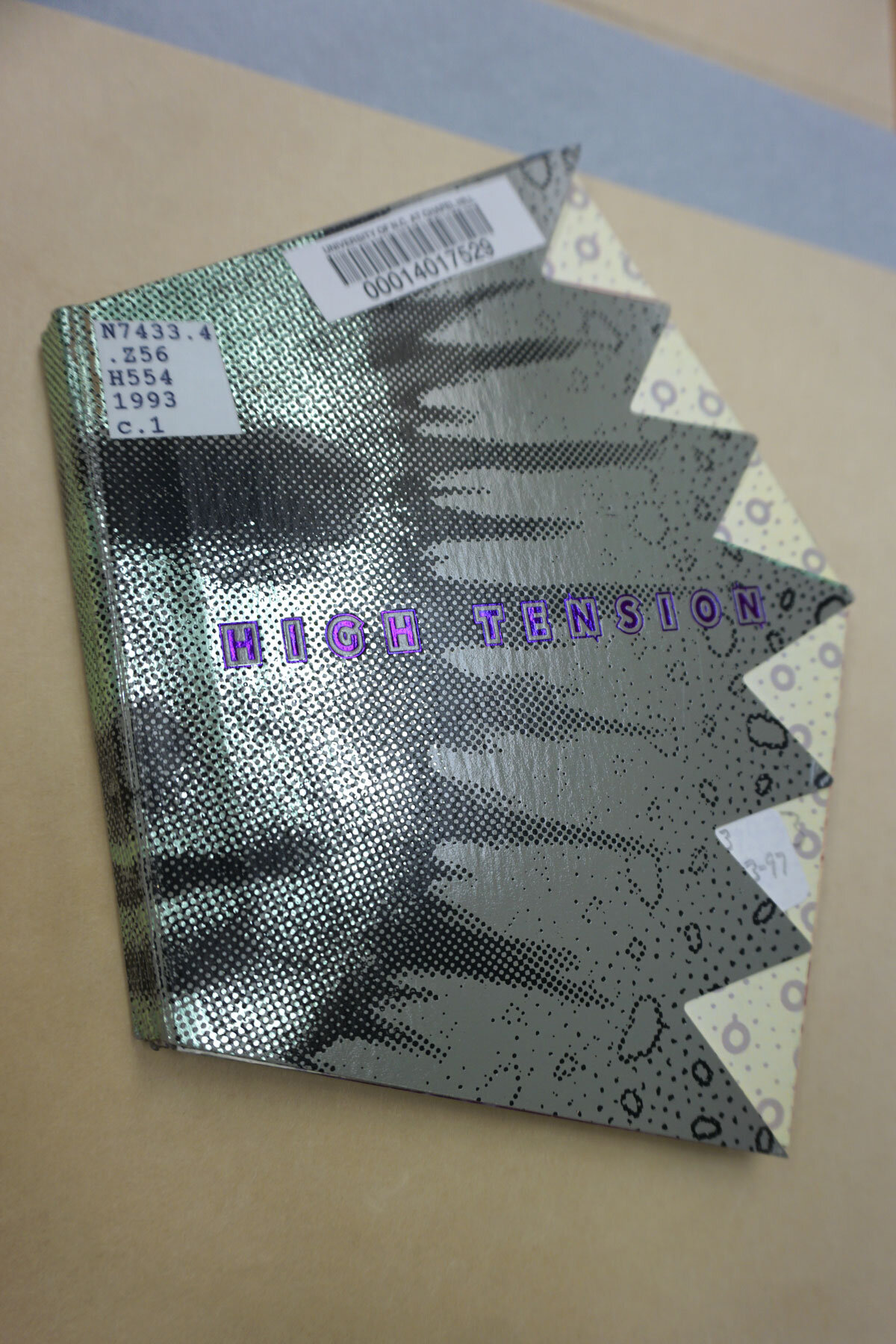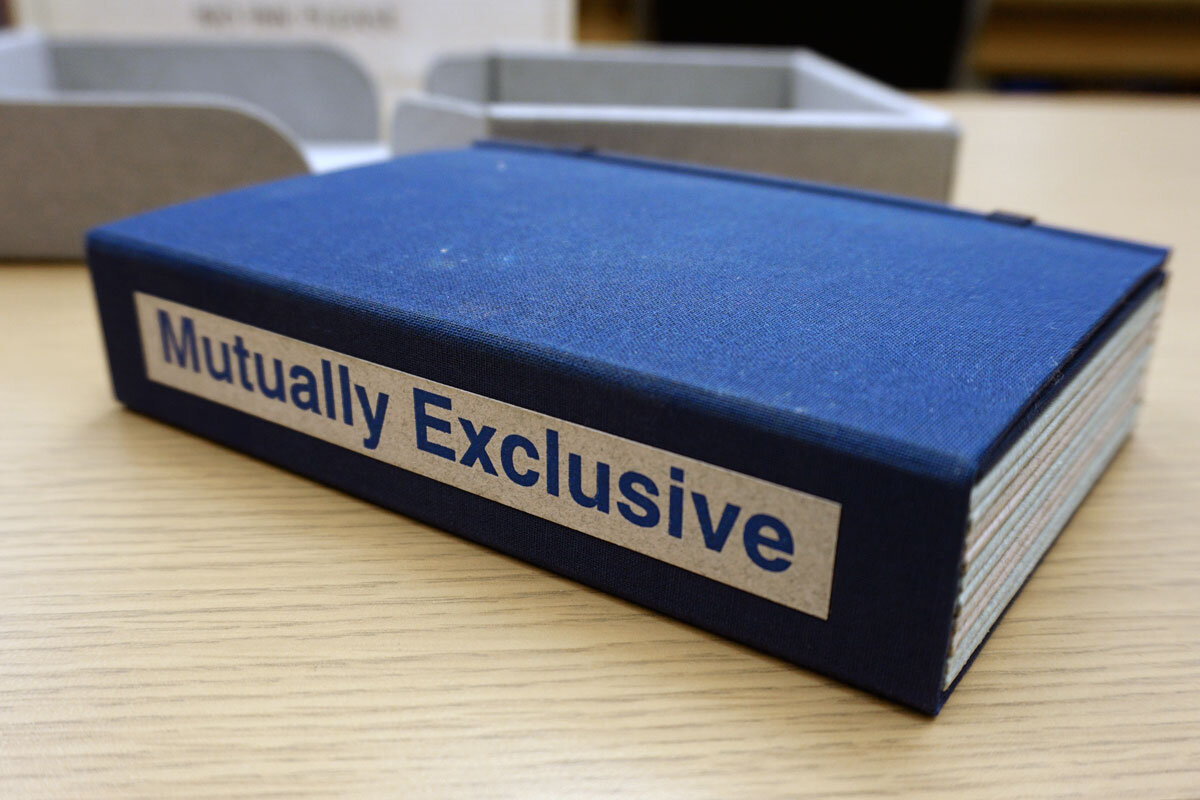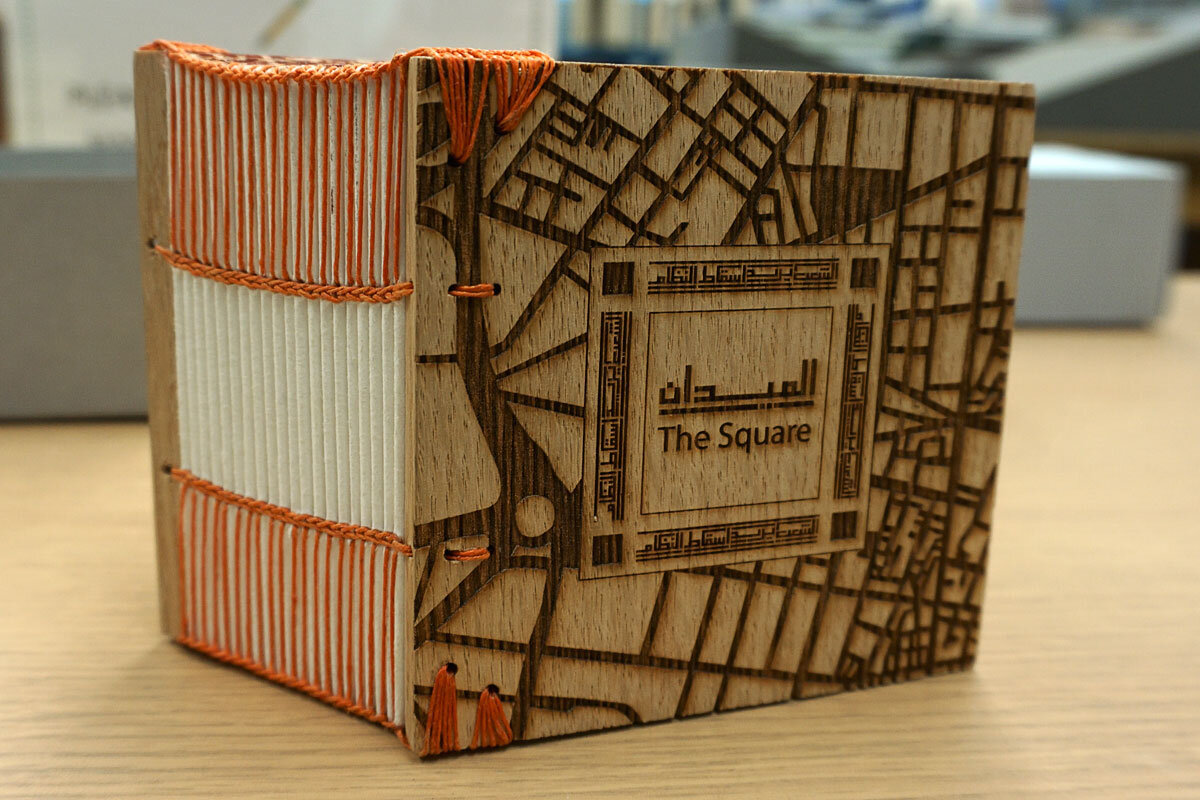Meticulously researching binding structures online a few years ago, I was captivated with Philip Zimmermann’s book work Sanctus Sonorensis, a book of border ‘beatitudes’. This work comments on the complicated attitudes of Americans on illegal immigration from Mexico. Being in Arizona for a few months, I reached out to Philip for a studio visit. But last April, another disappointment came my way when a planned visit to his studio in Tucson had to be promptly cancelled because of the pandemic.
While wandering full time, I relished the valuable experience of viewing artists’ books during my rendez-vous to many library special collections and artist studios. These tumultuous times establish unique challenges and missed opportunities. But, I aspire to continue virtually meeting with leading artists as mentioned in my previous post. Not the same as in person, for sure! But virtual communication, nevertheless, brings creative inspiration and opens doors for new dialogues with artists’ books.
This month 1/2 Measure Studio Blog is featuring Philip Zimmermann’s work for all of us to vicariously experience. Enjoy your visit.
Philip Zimmermann owns and operates Spaceheater Editions in Tucson, Arizona, and has been making artists’ books and multiples under this imprint since early 1979. Zimmermann produces open-edition and limited-edition works that use photography, printmaking and design.
© 2020 Philip Zimmermann. The front of Philip’s adobe brick house in the Historic Ft. Lowell area.
© 2020 Philip Zimmermann. Shown above is the exterior and entrance of Philip's main studio area. This adobe addition was built in the summer of 2008 after his move from New York.
Philip Zimmermann in his main studio. Courtesy of Philip Zimmermann.
© 2020 Philip Zimmermann. Views of the interior of Philip Zimmermann’s main studio area. It is only about 400 square feet plus a small full bathroom.
© 2020 Philip Zimmermann. This is the smallest studio Philip has ever had. The size of this tight atelier was determined by the amount of land at the back of his home and the HOA (Homeowners Association) rules.
© 2020 Philip Zimmermann. Living in an historic district, an architect was hired to conform to the building restrictions, HOA rules, the Historic Fort Lowell District as well as the city of Tucson. This didn’t seem like a straightforward task!
© 2020 Philip Zimmermann. The only printing devices Philip still has are a large Epson inkjet printer and a colour laser printer. Otherwise, he buys printing from overseas or from local commercial printers. His current book is being printed in France.
© 2020 Philip Zimmermann. The studio annex area which is in an enclosed part of what was a covered porch on the back of his house. This is where Philip does book binding board cutting, wrapping and shipping of books, foil-stamping, paste paper, and hopes to restart his silkscreen practice as well.
© 2015 Philip Zimmermann. Reaper is a meditation on the destructive cycle of violence and war, followed by rebuilding and reconstruction, then war again. This is often followed by yet another iteration of that rebuilding and destruction: a painful cycle that has continued in many areas around the globe throughout history.
© 2015 Philip Zimmermann. The theme for Reaper was inspired by the events in Gaza during the summer of 2014. It is most commonly caused by the friction and antagonism between different religious and tribal/ethnic belief systems and often aggravated by the extreme actions of fundamentalists on both sides and their often rigidly-held and intolerant ideas.
© 2015 Philip Zimmermann. In this book, based on an adaptation of the old Turkish-map-fold structure, text is read on several levels. The outer tabs hold the first ten rather innocuous lines of the primary texts of four specific belief systems. They include the Rig-Veda the oldest sacred Hindu text, the Torah (Genesis) from the Jewish faith (the Old Testament), the first lines of the Christian New Testament Bible, and finally the first ten lines from the Qur’an from Islam. The title of the book refers to both death, as in ‘the grim reaper’, and to the model name of one of the American drone or UAVs (unmanned aerial vehicles) used for bombing in the Middle East and elsewhere.
© 2015 Philip Zimmermann. Reaper is a four-colour archival pigment inkjet-printed book, created as a series of fold-out, modified, Turkish-map-folds, printed on acid-free French Paper Co. stock. Pages hand-cut and folded and cased-in by hand, with board covers; German Dubletta bookcloth spine was used, with inset title. An archival phase-box enclosure is included. Dimensions: 6.5" x 7.5" x 1". An edition of 25 copies, signed and numbered.
© 2014 Philip Zimmermann. Incident in Deseret — on January 5th, 2014, seven book artists were in Salt Lake City to attend the national conference of the College Book Art Association at the University of Utah. A group traveled to Robert Smithson's canonic land-art piece The Spiral Jetty, about an hour or two out of town in the nearby Great Salt Lake. To commemorate the visit, it was decided that each artist who was there that day would create a book with the Spiral Jetty as theme, and complete it within one year – or earlier if possible.
© 2014 Philip Zimmermann. The idea behind Incident in Deseret: “I am fascinated by faith, and how so many religious people throughout the world are able to ignore what many would think of as logical thinking in order to make the leap to belief. In some ways, I admire that ability as it suggests a certain innocence and magical thinking that I am not able to summon up. The danger is when those folks start to think that they are the only people in the world able to communicate with god and travel the true path to heaven. I think of the location of the Spiral Jetty and Salt Lake itself as ground-zero for the Church of Latter Day Saints and the Mormon faith. Although my book uses terminology that comes from the LDS belief (picked due to the location of the Spiral Jetty) I could have just as easily have used nomenclature from any number of other world religions. Stylistically, I think of this book as the meeting of Jean-Luc Godard's Alphaville and Chris Marker's La Jetée with The Book of Mormon. Deseret is the original Mormon name for Utah and was originally comprised of a large section of the American West that included not only Utah (and the Great Salt Lake where the Spiral Jetty is) but also large portions of Colorado, New Mexico, Arizona and California. Brigham Young's petitions to the US Congress to recognize this huge new state were turned down numerous times and eventually became what is now the current, much smaller, state of Utah. Deseret was also a language and an alphabet system that was developed but never widely used during the 19th century by the Mormons. The title also gives a little nod to a classic western book that I was impressed with when I read it in high school, The Ox-bow Incident and another book (and famous short film) called An Occurence at Owl Creek Bridge.”
© 2014 Philip Zimmermann. The edition of Incident in Deseret is printed by archival inkjet on uncoated oatmeal Speckletone paper made by The French Paper Company and bound in a drum-leaf binding in an edition of thirty. There is also a digital print-on-demand version on white coated paper. The dimensions on both are 8"x8"x.5". The book was started in Philip’s studio in Tucson and completed during an artists' residency at the Ucross Foundation, Clearmont, Wyoming, in August 2014.
© 2011 Philip Zimmermann. Cruising Altitude is a dos-á-dos (double-sided) book on one side about wanderlust, travel, and the quest for the exotic. The other side covers the darker angle of travel: of being a stranger or foreigner in another country or culture.
© 2011 Philip Zimmermann. “The section titled ‘Above’ in Cruising Altitude explores the desire to travel away from one’s normal and humdrum world, to see and experience the different and the exotic.”
© 2011 Philip Zimmermann. “There are many complex reasons why we want to travel. Part of what drives wanderlust is an impatience with the everyday and the desire to expand one’s horizons, sometimes to destroy one’s comfortable status quo, to escape, to satisfy one’s curiosity about the world. Travel makes one more tolerant, perhaps even promotes peace between cultures and nations.”
© 2011 Philip Zimmermann. Cruising Altitude.
© 2011 Philip Zimmermann. Cruising Altitude.
© 2011 Philip Zimmermann. “However ’Below’ (the other, mirror, section) is about the flip-side of wanderlust. In Cruising Altitude the traveler, displaced person, or foreigner encounters a virulent and often jingoistic resistance from the inhabitants of the new locations that one enters as a visitor. Terms for ‘the other’, usually derogatory or demeaning, appear over photographic views looking down from airplane windows. Although I believe this to be universal, living in Southern Arizona on the border with Mexico I am very aware of this viewpoint in some of the local state population. In addition to the feelings that I have about this subject derived from my current living location, I was the child of an American diplomat. Although I grew up loving the many different places we lived, I never fit in to any of them, nor felt that any one of the places we lived was my home, always feeling like ‘the other’, and that includes the United States itself.”
© 2011 Philip Zimmermann. Cruising Altitude was published in an edition of fifty. The text-block interiors and end-sheets were printed by HP Indigo. There are gold and silver metallic foil titles on both covers. The book was bound by hand with archival book board and Kensington premium bonded red leather, designed to look and feel a little like the old Baedeker travel guides that were extremely popular in Europe in the late 1880s through the 1930s. The dimensions are 5"x8"x.5". Each book comes in an archival gray phase box.
© 2003 Philip Zimmermann. Nature Abhors is about loss, the inevitable by-product and, (perhaps pessimistically) the final result of life and love.
© 2003 Philip Zimmermann. “In the previous four years I had had a great deal of loss in my life with both my parents dying (one by a hit-and-run car), 9.11.2001 and all that meant for anyone living in New York, plus romantic complications in a relationship where the two of us did not need or want the same thing. This book is a rumination on what loss has meant for me personally and also what I have found has been a more universal feeling of loss since 9.11. Although the book contains visual references to the twin towers, it is determinedly not about that disaster but more about the collateral damage from that period of time on personal relationships, and ways of moving on from that loss.”
© 2003 Philip Zimmermann. Nature Abhors.
© 2003 Philip Zimmermann. Nature Abhors is 5.25 x 5.25"; printed by HP Indigo on Mohawk Superfine paper. It is 30 pages long, in a hand made slipcase and comes in corrugated-paper fold-out archival phase box. The woven spine construction is based on a model developed by Claire van Vliet from a form originally created by Hedi Kyle. The photograph on page six was taken by Elizabeth Alderman, all the others and the text are mine. To be read through on one side, then on the reverse. Accordion-folded, each sheet affixed to the next with paper tabs illustrated with segments of spinal vertebrae. Both the slipcase and the book are signed and numbered by the artist in an edition of 150.
I graciously appreciated Philip Zimmermann's time and especially the possibility of sharing is work with all of us. Philip’s new book entitled Swamp Monsters is a series of distorted photos of the president and his flunkies at the Republican National Convention; printed on newsprint with a high speed Kodak inkjet at PRINTNEWSPAPER in France.
Swamp Monsters is already on sale in a number of book outlets including Printed Matter in NYC.





